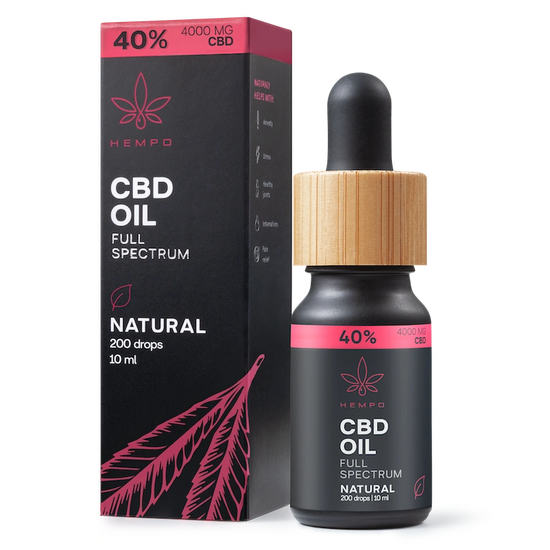Hemp: its history in Lithuania and the world
Industrial hemp is a botanical plant belonging to the Cannabis sativa family, cultivated for various industrial purposes, including the production of CBD oil. Industrial hemp has a long and rich history in Lithuania and around the world, due to its widely recognized health benefits and versatile applications.
In this article, we will give you a very concise account of the role of hemp in the history of Lithuania and the world. Table of Contents

Ancient times
According to historians, hemp is one of the oldest crops in Lithuania(crops are plants that people grow to obtain certain benefits). Some seeds of the hemp plant and a well-preserved hemp cord were found in the settlements of the ancient Narva culture (3500-3000 BC). This plant was widely cultivated and used for at least 5,500 years before it was banned at the beginning of the Soviet regime.
Historical and biological studies show that the Baltic region was probably one of the first in the world where hemp was grown for fiber and was widely used by people to improve their daily life (household, work tools, clothes and/or their parts, etc.). It should be noted that the latest data provide new and very valuable information, which allows us to assume that hemp was used in Lithuania even before the arrival of Indo-European cultures from the Southwest.
Many of the customs associated with flax (Latin Linum) and processing processes (such as soaking in water, pedal-powered threshing, etc.) may have survived from ancient times when hemp was the main source of food and fiber. Historians claim that the double semantics existing in the Lithuanian historical culture between hemp and flax is very significant, showing a clear trace of hemp fabrics in linen textile traditions and historical sources. In the Middle Ages, flax integrated into the millennia-old complex of archaic fiber plants and hemp that replaced them in the Neolithic period, which was processed using the same tools used for hemp processing.

Harvesting hemp, 1925, Vilkaviškis district
Grand Duchy of Lithuania
The culture of using hemp was no less important during the period of the Grand Duchy of Lithuania. Many findings undoubtedly confirm the spread of hemp culture, e.g., hemp products were widely used for day-to-day purposes in the17th and 18thcenturies. Housewives used hemp seed oil, and bedding and clothing were made from linen and hemp. The paper industry mainly used linen, cotton, woollen and silk rags, while hemp was introduced in the 18th century. It is also important to mention the economic importance of hemp in this period. Between late 17th century and 18th century, the trade hub was the Port of Riga. It was used for transporting hemp and other parts of hemp (seeds, stems, leaves), flax and its seeds, from which oil was pressed, as well as various wood products (stems, logs, wood for shuls, etc.) for ships, among other things, ash, coal, potash and furs.
In 1786-1791, Königsberg became the most important grain port in western and central Grand Duchy of Lithuania. It received furs, hemp and their parts, cereal, linseed, oil, ash, coal, potash, tallow, grain and fat.
Modern-day Lithuania
Today’s culture of growing hemp in Lithuania proves the saying ‘Everything new is well-forgotten old’. The area of hemp crops is constantly expanding, and more and more people are discovering the benefits of this unique plant and its products, including organic oil, soap, cosmetics, nutritional supplements, tea, building materials, fuel and much more. Now, with the help of modern technology, hemp can be used for nearly 50,000 different products, including CBD oil.
Hemp Products and Their Uses
Hemp fiber is a unique material with distinct characteristics. It is less flexible than linen and comes in various natural shades, from yellowish to gray. Although difficult to bleach to bright colors, it stands out for its durability. These traits make it an ideal material for manufacturing ropes, cords, sponges, and coarse fabrics like sacks. Some special hemp varieties, due to their light and glossy nature, are turned into fabric comparable to linen, suitable for clothing production. Hemp fiber can even be used to make shoes. Additionally, hemp is used in the production of bioplastics, which can be either recyclable or biodegradable depending on their composition. Another interesting innovation is hempcrete, a combination of hemp and lime, which is gradually becoming an alternative to traditional concrete in the construction sector. Hemp is also utilized as wood pulp for paper production or as a substitute for fiberglass.
Hemp seeds are another valuable product, rich in protein, fiber, and magnesium. These dehulled seeds, also known as hemp hearts, are prized for their nutritional properties. They can be eaten on their own or added to various dishes and beverages. Hemp seed milk, a lesser-known product, is an excellent alternative to regular milk and can be used in various culinary applications.

Across the globe
To have a fair assessment of the importance of hemp in a global context, we need to look at the use of this plant at different stages of human history.
8000 BC. The earliest use of a hemp cord in pottery was found at an ancient village site dating back over 10,000 years, located in the territory of modern-day Taiwan. Since hemp was found to be used and cultivated during this period, it is believed to be one of the first and oldest known cultivated plants in human history.
6000 to 4000 BC. In the present territory of China, hemp, hemp seeds and hemp oil are used for food, while the plant's fiber is used to make clothing.
2737 BC. The use of fiber hemp and its parts in medicine is mentioned in the manuscripts of the Chinese Emperor Shennong.

2000 BC. Bhang(dried hemp leaves, seeds and stems) is mentioned in the Hindu sacred text Atharvaveda as ‘Sacred Grass’, one of the five sacred plants of India. It is used in medicine and rituals as an offering to Shiva (one of the trinity gods).
800 to 200 BC. The production and trade of hemp products are spreading rapidly in Asian countries, North America and Europe. The Scythians, a powerful Indo-European nation of that time, brings hemp to central Europe, the territory of modern-day Germany.200 BC. The first records of the medicinal properties of hemp for the relief of various pains, inflammations and oedema are found in Greek annals.
200 BC to year 1000. The first evidence of hemp paper dates back to the early Western Han Dynasty (around 200 BC). Recycled hemp clothing, rags and fishing nets are used as raw materials for paper production. By the 6th century, the paper-making process has spread to modern-day Korea, where hemp was used for thousands of years before, and to Japan, where hemp was first used 10,000 years ago. In year 1000, hemp is already used for making ropes in southern Russia, southern Greece, western Spain and the British Isles.

1100 to 1500. According to historical sources, when Portuguese explorers arrived in South Africa, they learned that the local tribes had been using hemp for over 500 years.
In 1492, Christopher Columbus and his crew set out on an expedition to discover the new way to Asia, and the sails of all three ships – Pinta, Nina and Santa Maria – were made of extremely strong hemp fibers that could withstand the merciless winds of the Atlantic Ocean. Although Christopher Columbus did not realize it himself, his voyage forever connected the Old and New Worlds, and hemp played a crucial role in the discovery of the Americas.
The Discovery of Hemp Paper
Paper, one of ancient China's most important inventions, has a long history from ancient times to today. The use of hemp and mulberry bark fiber, discovered in ancient Chinese tombs in the first century, confirms the use of hemp in making this unique product. The paper-making process - pulping, mixing with water, forming, and drying -was a closely guarded secret in China for centuries.
However, important knowledge eventually spreads. By the fifth century, Japan had discovered this paper-making method, and by the ninth century, through Chinese prisoners, this technology reached the Arab countries. Today, hemp paper is still produced, but the dominance of wood in the raw materials industry and the higher cost of hemp paper production reduce its demand. Nevertheless, considering the negative environmental impact of deforestation, hemp paper has the potential to become a more eco-friendly and sustainable choice in the future.
Industrial Hemp in Lithuania and the World: A Summary
Hemp has a rich and diverse history both in Lithuania and worldwide. It has been cultivated for thousands of years for its fiber, seeds, and nowadays, CBD oil. In Lithuania, hemp was traditionally grown for its strong fiber, used to make textiles, ropes, and fishing nets. Globally, various civilizations have recognized hemp's versatility - from ancient China, where it was used for textiles and medicine, to Europe and America for making sails, clothes, and increasingly for its environmental benefits. In recent years, interest in hemp has surged again due to sustainability issues and the untapped potential of hemp in various industries - from construction to bioplastics and healthcare. This resurgence indicates that hemp's importance remains significant, with its benefits increasingly acknowledged.
We invite you to read more articles about hemp and its benefits.





